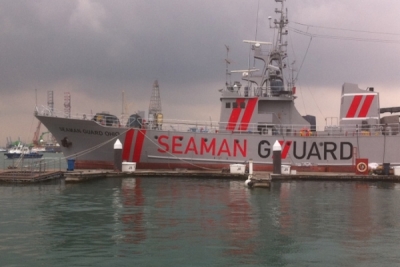Ship owners of LR1 dirty tankers could soon make the switch to clean trading

New trading partners are always emerging in the shifting world of the tanker market these days. Yet another one seems to have emerged over the course of the past few months, as more and more owners of dirty LR1 product tankers, could be making the move to clean products, sooner rather than later. In its latest weekly report, shipbroker Charles R. Weber said that “until recently, LR1 tankers had counted on a positive future in the product tanker markets they were constructed to serve – even if the prevailing earnings differential between Panamax and LR1 markets had seen a significant share of the LR1 fleet trading dirty cargoes. The starting up of a number of large, export‐oriented refineries in the Middle East – with Europe’s then‐coveted diesel market in their sights and building upon demand gains accompanying the earlier surge in product exports from India – was poised to offer significant fresh product tanker demand to make product trades decidedly more lucrative”, the shipbroker said.
According to CR Weber, “for a time, it seemed that all was going according to plan with each new Middle East refinery start accompanied by a substantial boosting of LR1 earnings. However, during 4Q15, LR1 earnings dipped while Panamax earnings surged – and since the start of the year both markets have been in a similar directional decline. Amid the uncertainty of both markets, the distribution of preexisting LR1 tonnage between clean and dirty markets has remained the same since a year ago. Though some units switched from dirty to clean trades and vice versa, the number in each instance was the same – and small: a total of six units cleaned up to trade in clean markets and six units trading clean dirtied up. During the preceding year, switches to dirty outweighed those to clean by seven to five, in line with stronger Panamax earnings. Presently, 38% of LR1s are trading in the dirty market, which compares with 39% a year ago.
Of the eleven newly built LR1 units which have delivered over the past year, however, ten have traded in the clean market while the remaining unit is believed to be shuttling crude between Brazil’s offshore Campos basin fields and shore”.
The shipbroker added that “in addition to trading fuel oil and other dirty refined petroleum products, Panamaxes benefit from a small number of isolated crude markets where port restrictions and production volumes favor the class’ relatively small size. However, with such crude flows fairly steady and largely opaque, Panamax earnings are heavily influenced by fuel oil trades. And as with most refined product markets, fuel oil inventories have been overbuilt by both a global surplus of refining capacity and excessive runs due to elevated margins during 2015. Thus, the same absence of clear arbitrage opportunities which have adversely impacted product tanker markets this year has also gripped the fuel oil market – and softer tanker rates have thus extended to both the clean and dirty spaces. Panamax earnings have taken a particular blow in the Atlantic basin with TCEs in the Caribbean market now in negative territory. However, with LR1s presently earnings nearly double those of Panamaxes, an increasing number of owners of dirty LR1s appear to be considering now an ideal time to make the switch to clean”, CR Weber concluded.
Meanwhile, in the crude tanker markets this week, the shipbroker noted that “VLCC rates were mostly unchanged this week with positive pressure resulting from recent demand gains in the Middle East and West Africa markets countered by surplus July positions at a two‐year high and a slowing of chartering activity coinciding with the progression from into August dates. Moreover, recent West Africa demand strength, while positive for ton‐mile development, is having less of an immediate impact given that units sourced for the region’s cargoes are less concertedly from the Middle East than is normally the case. Instead, a number of West Africa cargoes have been fixed on units ballasting from the Caribbean market, where a slowing of cargoes from Venezuela has created a wide supply/demand imbalance (three of this week’s seven regional fixtures were on Atlantic basin positions, rather than Middle East positions)”.
CR Weber added that “we note that 22 Middle East positions were uncovered at the conclusion of the July program – the most since September 2014 and seven more than the conclusion of the June program. As the market progresses into August dates, the surplus looks set to ease, but not likely by a sufficient number to support rates. We count 51 units available through the end of August’s first decade, while 12 fixtures have materialized thus far leaving a likely 28 remaining. Once factoring for likely West Africa draws, the implied surplus is 18 units. This week’s IEA report noted that refinery utilization rates were lower during Q2 than previously expected but will likely surge during Q3. Against recent ton‐mile gains in‐line with stronger WAF‐FEAST flows, this could set the market for fresh upside later during the quarter but in the interim rates will likely stagnate. The market is presently observing the development of two tiers comprised of 69 competitive/modern units and disadvantaged/older ones”, the shipbroker concluded.
Nikos Roussanoglou, Hellenic Shipping News Worldwide
HEADLINES
- Do shipping markets want Biden or Trump for the win?
- All 18 crew safe after fire on Japanese-owned tanker off Singapore
- Singapore launching $44m co-investment initiative for maritime tech start-ups
- Cosco debuts Global Shipping Industry Chain Cooperation Initiative
- US warns of more shipping sanctions
- China continues seaport consolidation as Dalian offer goes unconditional